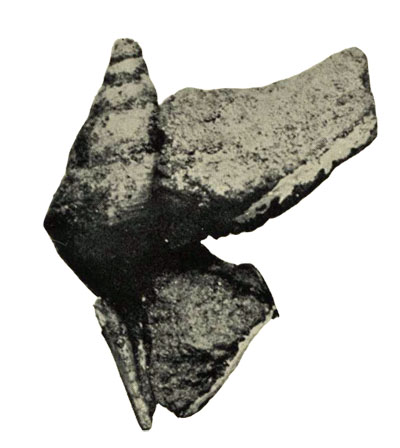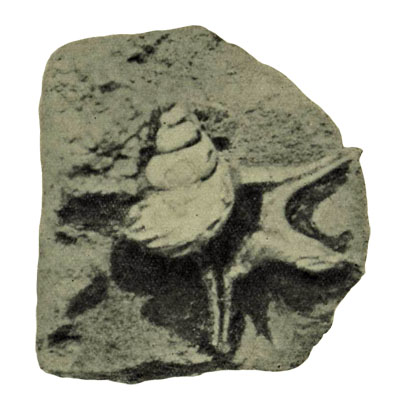Species / Hemichenopus Zelandicus
Stromboidea
Original description of Dicroloma zelandica by Marshall, 1919:
- "Shell of moderate size. Length, 28 mm.; breadth, 9 mm. Spire of five convex whorls rapidly decreasing in size. Suture shallow. Beak not complete, but apparently about two-thirds the length of the shell. The whorls with numerous slightly raised spiral threads; there are twelve on the penultimate whorl: these are crossed by numerous low radial lines which are strongly bent backwards in the middle. Body-whorl with spiral striation more distinct, but no radial lines can be distinguished. At the very beginning of the body-whorl a keel starts to develop a little above the crown of the convexity of the whorl. A little farther forward another keel is developed slightly below the crown of the convexity. The two keels are separated by four spiral lines. The two keels rapidly increase in prominence, and where they reach the outer lip they extend into two large wings. The anterior wing is at first directed forward in direct continuation of the keel; 10 mm. distant from the outer lip it bends through a right angle and, extending for 9 mm., it terminates apparently near the end of the beak. The other keel also ends in a wing, which at first proceeds outward in a continuation of the direction of the keel, then bends gradually downward, and ends about 15 mm. from the penultimate whorl."
Locus typicus: Hampden, North Otago, South Island, New Zealand
Stratum typicum: Kaiatan (roughly contemporaneous with the Bartonian Stage), Eocene
Dicroloma zelandica in Marshall, 1919, pl. XV, fig 16, Copyright Royal Society of New Zealand / National Library of New Zealand
History and Synonymy
1920
Description of Dicrolama zelandica Marshall, 1920 by Marshall & Murdoch, 1920:
- "Shell small, fusiform, of six whorls, the last rounded, abruptly contracted at the base, with a narrow and moderately long anterior canal, which is slightly inclined or bent to the left; spire-whorls convex, the apex missing; sutures not impressed, the removal of the outer shelly layer gives to them a somewhat deep appearance. Sculpture: On the last whorl, a little below the periphery, is a strong spiral rib, a second below this margining the base, and beneath these two or three more slender cords, the first-mentioned ribs about twice their own width apart. Aperture oblique, rather narrow, the outer lip expanded, thickened, and with two prominent lobes, while from each lobe proceeds a long stout digitation (the extremities broken off); the posterior digit is almost at right angles to the axis of the shell and proceeds from near to the sutural margin; above its junction is a fairly strong callus which spreads to the suture above; the median lobe and digit are somewhat larger than the above, and the space between and the angle formed are smaller than between the median and the anterior canal. Each digit has a pronounced smooth furrow; the groove of the anterior canal is little more marked than that of the digits."
Measurements: Length, 23 mm.; width (excluding digit), 13 mm
Locality: Hampden, North Otago, South Island, New Zealand
Dicroloma zelandica in Marshall & Murdoch, 1920, pl. VII, fig 13, Copyright Royal Society of New Zealand / National Library of New Zealand
References:
- Allan, 1926
- Beu, A.G.; Maxwell, P.A.; Brazier, R.C. 1990 Cenozoic mollusca of New Zealand. New Zealand Geological Survey paleontological bulletin 58
- Marshall, 1919
- Marshall & Murdoch, 1920
- Maxwell, P.A. 1992 Eocene mollusca from the vicinity of McCulloch's Bridge, Waihao River, South Canterbury, New Zealand : paleoecology and systematics. New Zealand Geological Survey paleontological bulletin 65
- Nielsen, 2005


